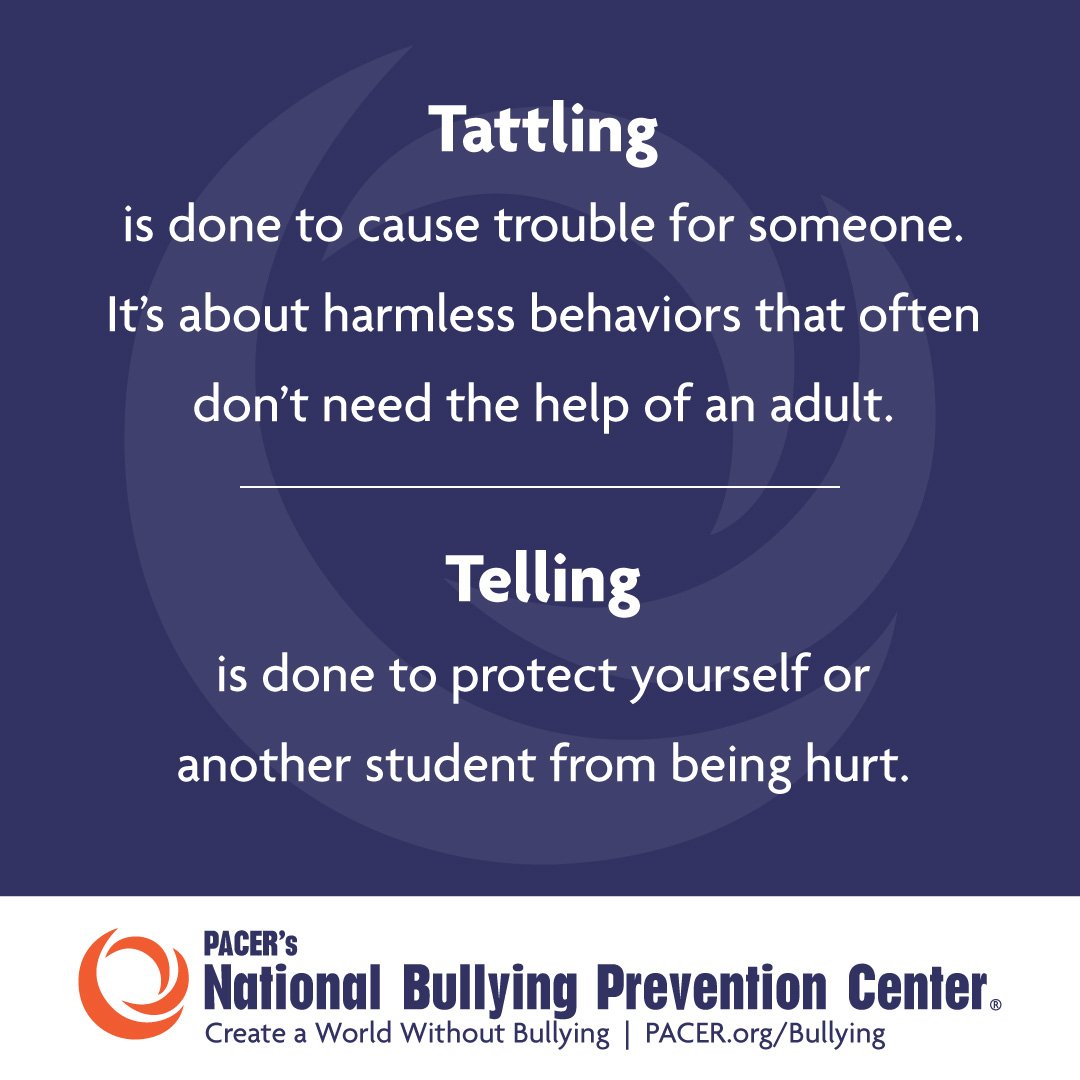Speaking Up About Being Bullied Isn’t “Tattling” — and Our Kids Need to Know the Difference

Amber was about to go to lunch when she received a call from the nurse at her 8-year-old son’s school.
“Devon was playing ball, and he got hit in the back,” Ms. Williams told Amber. “He was knocked down, and he skinned both knees. He had the wind knocked out of him.”
Five minutes later, keys in hand, Amber was on her way.
She could tell immediately that Devon had been crying. She hugged him, and when she suggested he come home with her, Devon didn’t protest. He didn’t want to talk on the ride home, so Amber waited until later to ask what had happened.
“This guy said I couldn’t play kickball with him and the other guys,” Devon told her. “Then he threw the ball at me real hard and laughed when I fell down.”
Devon then shared that a boy in his class named Anthony had been picking on him. He’d thrown the ball at Devon, called him names, and refused to let him join in kickball games.
Amber asked if Devon had told his teacher about what was going on. “I wanted to tell Ms. Brown, but I didn’t want to be a tattletale,” Devon said tearfully.
Like Devon, most children who are bullied don’t report it. Younger children often don’t recognize bullying behaviors, and may be afraid they’ll be called a tattletale, or worse, if they tell an adult. It’s especially important to talk openly with your young child about bullying behavior, and to explain the difference between tattling and telling.
Here are some tips about beginning a conversation:
1. Define bullying.
Explain that bullying is when someone is being hurt by either the words or actions of another. These words or actions make the child feel bad, and they have a hard time stopping what is happening to them.
2. Explain the difference between tattling and telling.
Share action steps your child can take if they experience bullying, starting with telling an adult. It’s important to explain the difference between tattling and telling. Tattling is done to cause trouble for someone. It’s about harmless behaviors that often don’t need the help of an adult. Telling is done to protect yourself or another student from being hurt. These situations are harmful and need the help of an adult.
3. Use examples.
Share relatable examples of a telling or tattling situation, and ask your child when they should tell an adult. Would they need help to solve this problem? Is someone being hurt or harmed? For example, Willie passes a note to a friend. This is harmless behavior; reporting it to an adult may be called tattling. But when Ella purposely excludes the new girl from lunch and recess, this is hurtful; it’s bullying behavior, and telling is the right response.
4. Be supportive.
If your child does report bullying behavior, be ready to listen. It’s the child’s story; let them tell you about it. It’s important to be supportive, focus on solutions, and take them seriously.
PACER offers helpful resources for parents. What Parents Should Know about Bullying is a comprehensive guide to understanding and preventing bullying.


